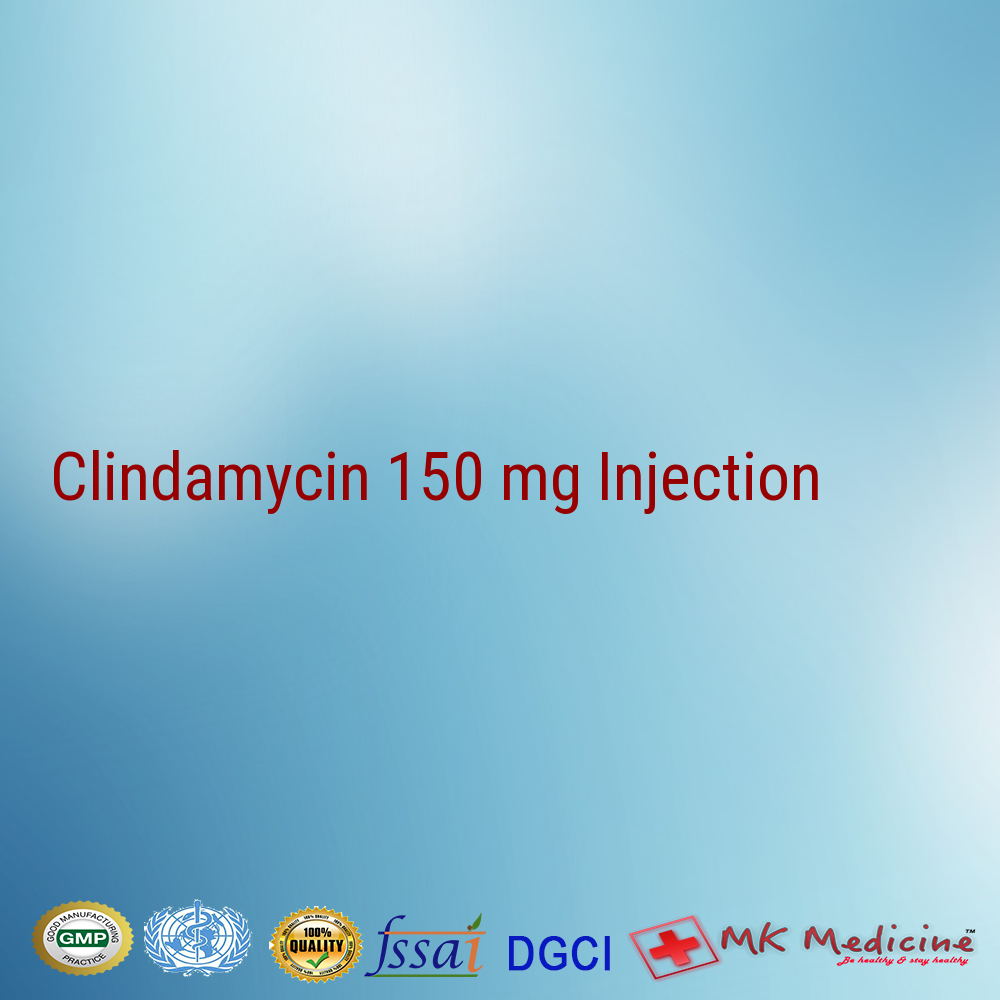Clindamycin is used to treat a wide variety of bacterial infections. It is an antibiotic that works by stopping the growth of bacteria.
This antibiotic treats only bacterial infections. It will not work for virus infections (e.g., common cold, flu). Unnecessary use or misuse of any antibiotic can lead to its decreased effectiveness.
This drug may also be used before dental procedures in patients with certain heart conditions (e.g., artificial heart valves) to help prevent serious infection of the heart (bacterial endocarditis).
This medication is used to treat a wide variety of bacterial infections. It works by stopping the growth of bacteria.
This medication should not be used to treat meningitis.
OTHER USES: This section contains uses of this drug that are not listed in the approved professional labeling for the drug but that may be prescribed by your health care professional. Use this drug for a condition that is listed in this section only if it has been so prescribed by your health care professional.
This drug may also be used before dental procedures in patients with certain heart conditions (such as artificial heart valves) to help prevent serious infection of the heart (bacterial endocarditis).
MK Medicine is a leading pcd franchise provider, contract manufacturer and hospital supplier of WHO-GMP certified Clindamycin 150 mg Injection
You should not use this medicine if you are allergic to clindamycin or lincomycin.
To make sure clindamycin is safe for you, tell your doctor if you have:
- A history of colitis, Crohn‚s disease, or other intestinal disorder
- A history of eczema, or allergic skin reaction
- Liver disease
- Asthma, or a history of severe allergic reaction to aspirin
- If you also take erythromycin
- If you are allergic to yellow food dye
Clindamycin is not expected to harm an unborn baby. Tell your doctor if you are pregnant or plan to become pregnant during treatment.
Clindamycin can pass into breast milk and may harm a nursing baby. You should not breast-feed while using this medicine.
Clindamycin can cause diarrhea, which may be severe or lead to serious, life-threatening intestinal problems. If you have diarrhea that is watery or bloody, stop using clindamycin and call your doctor.
Call your doctor at once if you have :
- Any change in bowel habits
- Little or no urination
- A metallic taste in your mouth
- Signs of inflammation in your body - swollen glands, flu symptoms, easy bruising or bleeding, severe tingling or numbness, muscle weakness, upper stomach pain, jaundice (yellowing of the skin or eyes), chest pain, new or worsening cough with fever, trouble breathing
- Severe skin reaction- fever, sore throat, swelling in your face or tongue, burning in your eyes, skin pain, followed by a red or purple skin rash that spreads (especially in the face or upper body) and causes blistering and peeling
Common clindamycin side effects may include:
- Nausea, vomiting, stomach pain
- Mild skin rash
- Vaginal itching or discharge
Biologically inactive clindamycin phosphate is converted to active clindamycin.
By the end of short-term intravenous infusion, peak serum levels of active clindamycin are reached.
After intramuscular injection of clindamycin phosphate, peak levels of active clindamycin are reached within 3 hours in adults and 1 hour in pediatric patients. Serum level curves may be constructed from IV peak serum levels as given in Table 1 by application of elimination half-lives (see Excretion).
Serum levels of clindamycin can be maintained above the in vitro minimum inhibitory concentrations for most indicated organisms by administration of clindamycin phosphate every 8 to 12 hours in adults and every 6 to 8 hours in pediatric patients, or by continuous intravenous infusion. An equilibrium state is reached by the third dose.
No significant levels of clindamycin are attained in the cerebrospinal fluid even in the presence of inflamed meninges.
Excretion
Biologically inactive clindamycin phosphate disappears rapidly from the serum; the average elimination half-life is 6 minutes; however, the serum elimination half-life of active clindamycin is about 3 hours in adults and 2½ hours in pediatric patients.
Special Populations
Renal/Hepatic Impairment
The elimination half-life of clindamycin is increased slightly in patients with markedly reduced renal or hepatic function. Hemodialysis and peritoneal dialysis are not effective in removing clindamycin from the serum. Dosage schedules need not be modified in the presence of mild or moderate renal or hepatic disease.
Before taking clindamycin, tell your doctor or pharmacist if you are allergic to it; or to lincomycin; or if you have any other allergies. This product may contain inactive ingredients, which can cause allergic reactions or other problems. Talk to your pharmacist for more details.
Before using this medication, tell your doctor or pharmacist your medical history, especially of: liver disease, kidney disease, stomach/intestinal diseases (e.g., colitis, Clostridium difficile-associated diarrhea), allergic conditions (e.g., asthma, hay fever, eczema).
Before having surgery, tell your doctor or dentist that you are using this medication (unless your doctor/dentist has directed you to take this drug before surgery as a precaution).
Older adults may be more sensitive to the effects of this drug, especially persistent diarrhea.
Tell your doctor if you are pregnant before using this medication.
This medication passes into breast milk. Though there have been no reports of harm to nursing infants, consult your doctor before breast-feeding.
Important Notice:- The Database is still under development and may contain inaccuracies. It is not intended as a substitute for the expertise and judgement of your physician, pharmacist or other healthcare professional. It should not be construed to indicate that the use of any medication in any country is safe, appropriate or effective for you. Consult with your healthcare professional before taking any medication.


Amikacin Sulphate 100 mg Injection